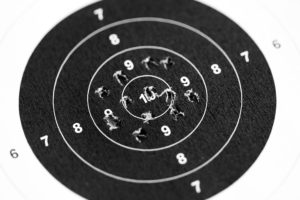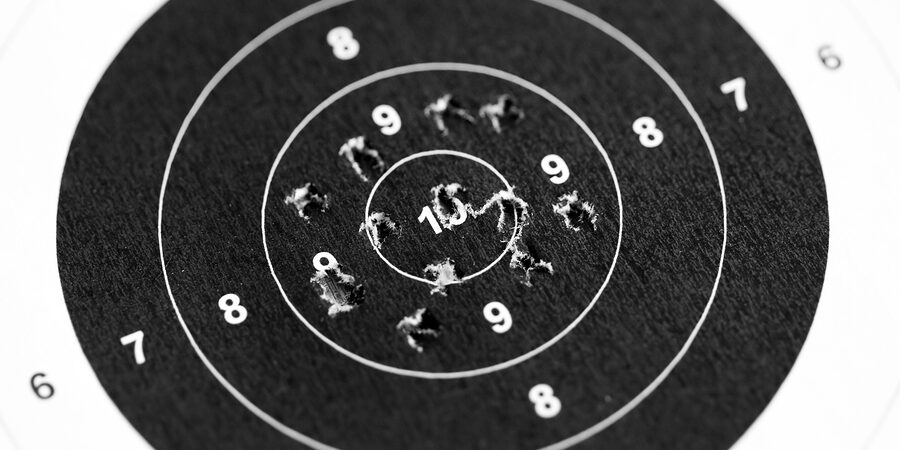
While some would consider shooting a sport, there is a different aspect to it that should be more prevalent, especially when it comes to long range shooting. Art. Yes, art. Art is defined as the expression or application of human creative skill and imagination, typically in a visual form such as painting or sculpture, producing works to be appreciated primarily for their beauty or emotional power. Being a skilled shooter, a marksman, requires the application of a complete understanding of the fundamentals of marksmanship, particularly when the target is set at a long-distance range. The visual form being effective shot placement on that target. You might think that the focus is the target. While this is true in the sense that your sights must be placed correctly on the target, the art of distance shooting all happens behind the gun and scope.
Position of Body Behind Gun
Regardless of whether you are in a sitting, kneeling, standing, or prone position, your body must support the natural recoil of the rifle. Your skeletal structure and muscular control/relaxation should be aligned with your natural point of aim. This includes proper placement of elbows, placement of rifle in the pocket of your shoulder, scope and eye relief behind the sights.
Aiming
In a proper shooting position, your natural point of aim occurs where the rifle sights settle once bone support and muscular relaxation occur. A marksman will always check this after any change in position. Your aiming eye should be aligned to the lens properly so that no scope shadow is present. Adjustments to the scope and eye relief may be made to achieve correct sight alignment. You should have a full field of view while maintaining the aiming point and hold on the target.
Breath Control
Breathing causes the body to move which directly transfers to the rifle. As a marksman, you must be aware of your breathing and be able to deliver your shot at the point where your natural respiratory pause occurs in your breathing cycle.
Trigger Control and Follow-Through
You must be able to manipulate your trigger to the rear without disturbing your sight picture or sight alignment. This skill involves being able to move your trigger finger independently from your hand and the rest of your fingers. As the round exits the barrel, it is important to continue to apply the fundamentals until the round fully exits.
Data Observation
Wind and weather conditions are both outside factors that can contribute to where the bullet will hit on target. As there can be multiple wind directions that constantly change, you must be able to read them and make the right adjustments (elevation and windage) based off your equipment. In long range shooting, the wind closest to the target may be different from where the shooter is. Knowing and testing what bullets and load you are using is also a factor to consider. Testing and finding the best bullets and load for your firearm is recommended, which can change depending on what type of long range shooting you are doing (match versus hunting).
Know Your Zero
You will need to know where to reference your reticle for hold overs or hold unders based on the distance of the shot. These could change drastically depending on the distance of your zero. Three consecutive shots within a 1-inch square is a reliable zero.
It’s vital to take all of these factors into consideration when honing your long distance shooting skills, practicing just one of them likely won’t get you to where you need to be. Make sure you’re following these guidelines, and that you’re using a quality long range rifle that’s built for accuracy. If you’ve been looking to upgrade, or are just curious about our custom options, give our expert gunsmiths a call today!





